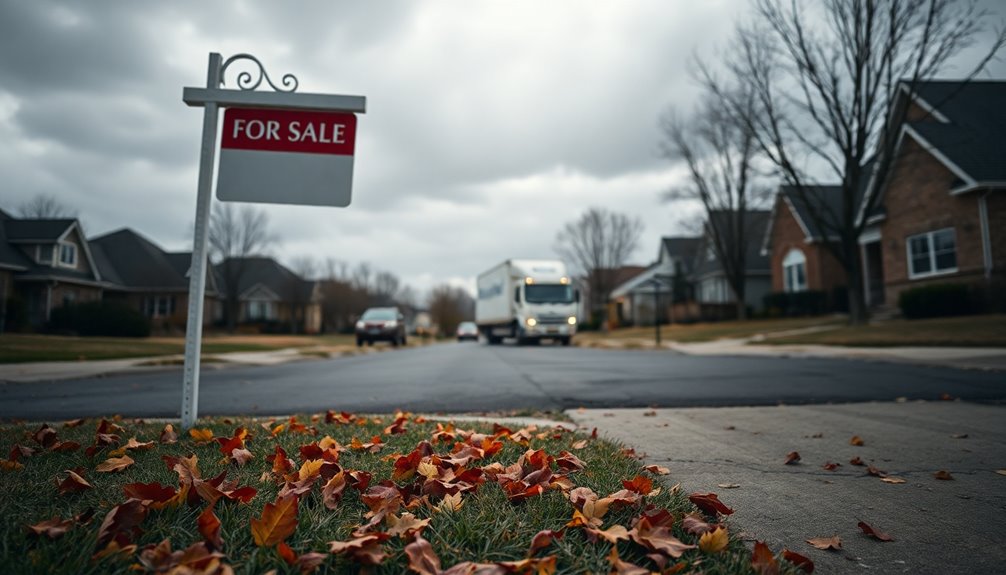You've probably noticed the housing market's recent shifts, especially with pending home sales dropping for the first time in five months. Rising mortgage rates, now over 7%, have certainly dampened buyer enthusiasm. This decline isn't just a minor blip; it's part of a larger trend impacting various regions differently. What does this mean for potential buyers and sellers? The answer might surprise you as the market continues to evolve.

As mortgage rates continue to rise, pending home sales have taken a significant hit, reflecting a cooling housing market. You might've noticed how mortgage rates have been hovering above 6% for over two years, and now they've climbed even higher, crossing the 7% mark. This shift has dramatically impacted homebuying activity, causing a 5% year-over-year drop in contract signings—marking the biggest decline since July.
Regionally, you can see that the West has been hit the hardest, with a staggering 10.3% decline in pending sales. The Northeast follows with an 8.1% drop, while the Midwest and South experienced smaller declines of 4.9% and 2.7%, respectively. It's clear that the rising borrowing costs are making potential buyers think twice before committing to a purchase.
As you navigate these conditions, remember that pending sales often indicate future existing home sales, usually leading them by one to two months. This is particularly relevant as buyers often make impulsive purchases before closing, which can jeopardize their financing and further complicate the home buying process. Diversification in investment strategies may help mitigate potential losses during such market fluctuations.
Several factors contribute to this decline. High borrowing costs have put a damper on homebuying enthusiasm. You might find it interesting that while pending sales are decreasing, new home sales are on the rise due to more affordable inventory options.
Seasonal factors, like winter storms and wildfires, are also expected to slow activity further. Moreover, uncertainty regarding housing policies and economic conditions has left many buyers and sellers feeling uneasy, leading to an uptick in canceled purchase agreements.
Looking ahead, you'll want to keep an eye on how this impacts the overall housing market. The decline in pending sales suggests that existing home sales could follow suit, which could lead to a tighter inventory situation.
In the South, however, there's a notable increase in for-sale housing inventory, helping to cushion the blow.
You might also notice that demand remains robust in the Northeast and Midwest, even as inventory growth slows. Affordable new construction continues to attract buyers, providing some relief despite the overall challenges.
However, displaced individuals seeking alternative housing could drive up rent prices, adding another layer of complexity to the market.









